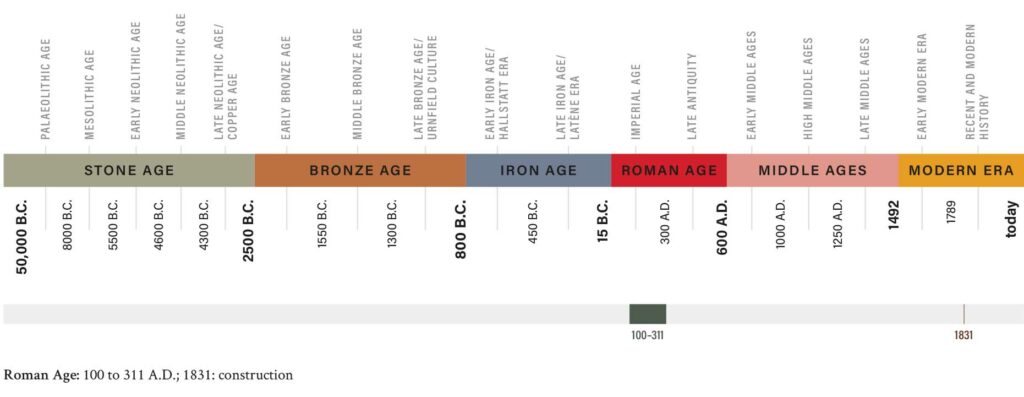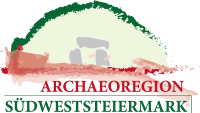
The Roman stone wall at Seggau Castle, erected in 1831, is a monument of supra-regional importance. The Roman-period stone monuments are not only important testimonies of the provincial Roman culture, but also provide insights into the eventful history of their reuse. These stones, dating from the Roman Imperial period, were originally funerary structures, honorary monuments and dedication altars, or parts of them. They were mostly made of local Eastern Alpine marble, and came from the funerary roads or public squares of the Roman city of Flavia Solva.
In late antiquity, a time of various threats and unrest, these structures and monuments were demolished and a massive tower was built from their stone blocks on the Leibnitz castle hill. In the Middle Ages, next to this tower, on a slightly lower level, the castle of the Archbishop of Salzburg was built; the northern part of this castle hill, together with the tower, was given to the newly founded diocese of Seckau in 1219. The diocese in turn integrated the tower into their castle complex or built around it. In the early 19th century, the Old Tower had to be demolished due to acute danger of collapse. Due to its size and massiveness, the demolition took place in two work phases over several years. In the masonry as well as in the foundation, numerous stone monuments from the Roman period with their artistic reliefs and inscriptions were brought to light again. After the final demolition of the tower in 1831, the cultural-historical significance of thesstones was recognized and they were bricked into the ground floor of a new corridor in front of the medieval wing of the building. This museum-like arrangement, taking into account the impression of these stones, gave rise to the Roman stone wall that is still preserved today.
Text: Paul Bayer BA, Mag. Dr. Stephan Karl

